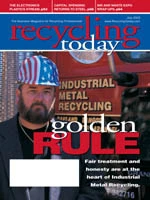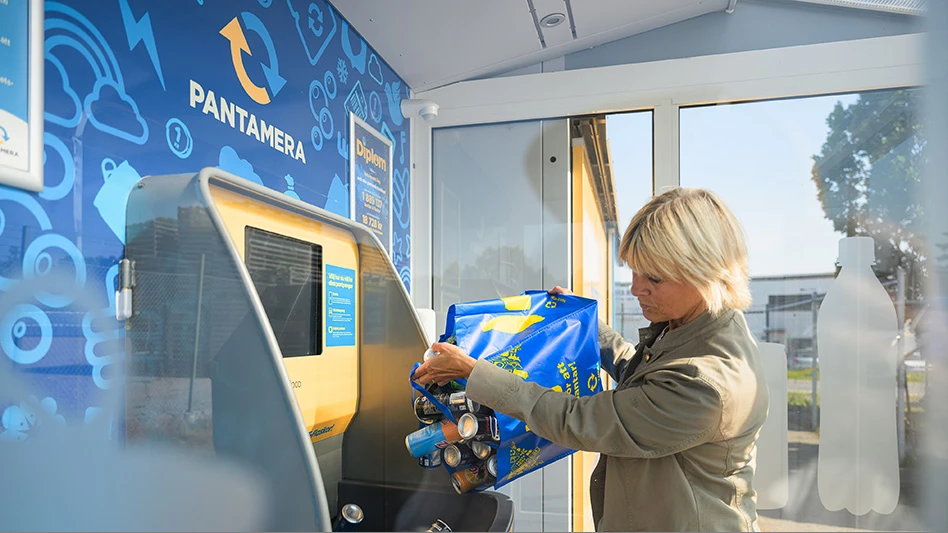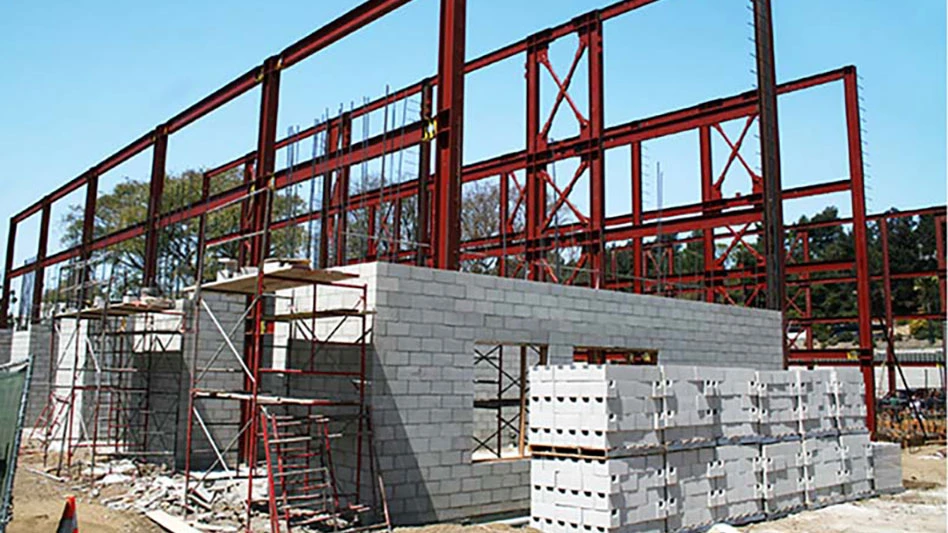Editor’s Note: The following are excerpts from a speech Ken Sandler, of the U.S. EPA’s Office of Solid Waste, made at a recent deconstruction conference and Used Building Materials Association (UBMA) meeting in Gainesville, Fla. While Sandler’s comments are not the official view of the EPA, they are perceptive takes on the current state of the deconstruction, demolition and recycling industries.
EPA has long provided me a good observation post on deconstruction, because all sides eventually come to us, whether it be to offer information, to seek partnership or support, to complain, to ask for money, or sometimes, to do all of these things at once.  And the longer you spend in a place like Washington, the more it becomes clear that some groups are more effective than others; some build up reputations, memberships, alliances and institutions, while others get left behind.
And the longer you spend in a place like Washington, the more it becomes clear that some groups are more effective than others; some build up reputations, memberships, alliances and institutions, while others get left behind.
I’d like to share with you my vision for how de-construction can grow to maturity and become, across America and the world, a well-known and well-respected way of doing business. While this industry has done a lot to come together and develop itself over the last few years, it’s important to understand that we are still at a very early stage of development. We’re still in the construction phase. So, let’s survey this construction site with an eye toward what we can do to build this industry into a lasting part of the landscape.
STEP BY STEP
Usually, the first step in construction is having a site to build on, which means choosing your neighborhood. To a large extent, I think the deconstruction industry sees itself as part of the recycling community, which is good, but I would encourage you to be aware of your larger neighborhood as well, which I would define first, as the Green Building community, and even more broadly as the whole movement known as Sustainable Development.
Green building is very hot right now; the U.S. Green Building Council now counts more than 2,000 organizations as members and reports that its LEED (Leadership in Energy and Environmental Design) green building rating system is now being used in more than 700 commercial construction projects equaling some 90 million square feet.
One of the actions for which building owners can get credit under LEED is the utilization of used building materials in construction. So, this brings up a few questions: Are you keeping up with the latest developments in green building? Are you a member of the Green Building Council? Are you joining the committees dedicated to updating and creating new versions of LEED? Are you marketing your materials to organizations seeking to get their buildings LEED-certified? Are you, in other words, taking full advantage of the opportunities that your neighborhood has to offer?
The next step in constructing an industry is finding solid ground on which to build. And there’s nothing more solid than hard data. So I strongly encourage you, the members of the deconstruction community, to become major data geeks. Measure every two-by-four that passes through your hands, every job you create, every dollar you put into the economy, every pound of material you save from the landfill, every building you take apart, every store you build, every life you affect. You need it to demonstrate your credibility to the financial community, to the government, to the media, to academia.
You can estimate and extrapolate, but—big caveat—do not exaggerate. Let’s not go around telling anybody that deconstruction is about to take over the world, making landfills unnecessary, curing all of our economic woes and turning the inner city into Shangri-La. Because it’s not true—and making unsupportable claims is the quickest way to destroy the reputation of this industry.
Despite its intangible nature, our reputation is the most valuable commodity we will ever own. Building on solid ground protects that reputation from sinking into the mud.
On top of this solid ground, of course, we need to construct a strong foundation. You folks know better than anyone the importance of a solid foundation, because you know how hard it can be to break one up.
An emerging industry like deconstruction needs to be built on a sound business plan that includes forward-looking goals and a firm grounding in the facts. In this regard, I appreciate the goals that UBMA has articulated, which are clear and useful.
Starting with those goals, I encourage you to prioritize them, to determine which ones you’d like to target most of your time and resources on, and develop a detailed strategy regarding how to achieve them.
SHORING UP THE STRUCTURE
As we build up the structure of this industry, we need to constantly make sure that it all holds together. This means building on this industry’s strengths and shoring up its weaknesses. Doing so can be difficult and even uncomfortable, but it’s preferable to having the roof come crashing down on top of us. Let me explain what I mean here.
Deconstruction has its critics and it can be tempting to ignore, attack, or discredit them. I’d like to suggest a more radical approach: Listen to them. In my opinion, your toughest critics can turn out to be your best friends, because they help you identify your weak spots, so that you can go about fixing them.
For example, some critics like to say that deconstruction just isn’t economical. Some of this criticism may be wrong-headed or misleading, but to me it says that we need to do as much work as possible examining and quantifying the cost, benefits, potential efficiencies and ways we can make deconstruction more economical, and then get this story out to key audiences. In other words, when you receive criticisms, deconstruct them, take out the substantive parts and use the pieces of information that you gain in building up the industry.
Shoring up the walls of this industry also means building on your strengths. Of course, one of the great strengths of this industry is that you are selling what EPA likes to call "environmentally preferable products." Ah, but there’s the tricky part, because environmental preference is an incredibly complex issue.
How can you make sure that what you do is unequivocally the best choice for the environment? If you pull out and re-sell a water-inefficient toilet, are you helping the environment through re-use or hurting the environment by encouraging people to waste water? How about single-pane windows?
And now we come to the bane of our existence, lead-based paint. What do you do with that old door you just salvaged, the one that is perfect in every way except for its lead-painted coating? Do you scrape off the paint before selling it? Do you sell it with a warning label? There are issues of law and liability here, but let’s just focus on the purely environmental issues for a moment; How do you make darn sure that at the very least, your work does no environmental harm?
You may be thinking that setting standards and guidelines for such things is EPA’s job, so I should be the one answering these questions. And I’m certainly happy to work with you all of you on these issues. But I would like to suggest that you not wait for EPA, but that you as an industry take the initiative to publicly, clearly and unequivocally set the standards that demonstrate your commitment to environmental protection beyond just material reuse. When you take the initiative, you become the heroes rather than the targets. In fact, that is what sustainability is all about—being proactive, not reactive.
Deconstruction and materials reuse can and should be one of the pillars of sustainability, but one pillar is not enough on which to build a lasting structure. Being sustainable in some ways, in fact, only increases the pressure on you to be sustainable in nearly every way. I encourage you to fortify your sustainability credentials to ensure that they remain unassailable.
OPEN EYES FOR INNOVATION
My final suggestion as you construct a great industry is that you keep your door wide open. That may not be the most energy-efficient approach, but it allows a lot of fresh air to come in. That includes the fresh air of innovation. Let us never sit on our laurels and think that this industry is good enough.
The most successful industries, and companies, have an undying devotion to continuous improvement, based on endless research and development. You may not be able to match their dollar level of investment, but you can match them in terms of creativity and ingenuity in always finding new and better ways to get the job done. Stay ahead of the trends with research on new tools, new markets, new uses for old materials, and more.
For example, is this industry ready to shift gears when the country ultimately runs out of World War II era-buildings to deconstruct, and you have to switch your focus to buildings constructed with more modern materials? Think ahead.
Keeping the door open also allows all kinds of people to walk in. I strongly encourage you to seek out a broad diversity of strategic partnerships that allow you to expand your base of operations and establish deconstruction as a standard operating procedure for governments, businesses and institutions.
Certainly partner with those who support a philosophy of sustainability, such as the green building organizations that I mentioned earlier, but don’t close the door to potential partners who may not completely share this philosophy. If there is an important sector out there with which you can only agree 10 percent of the time, then work together on that 10 percent, even as you continue to disagree and oppose each other on everything else.
Returning for a moment to the concept of the neighborhood in which this industry resides, surely there may be parts of that community where you feel less welcome than others. But ultimately, you have to deal with all of your neighbors, not just the ones you like.
The deconstruction industry has to deal with the demolition folks and the C&D recycling folks, in some fashion, whether it’s comfortable to do so or not. I would love to see a future construction and demolition industry in which the most valuable bits of debris are reused, the less valuable are recycled in the highest value ways possible and only the most useless or hazardous remainder—if any—is disposed of. But building that new world will at some point require dealing with people and businesses at every level of the product and material life cycle.
Of course, I know that many of you are doing much of what I discussed today. You’re working with institutions from the U.S. Army to local housing authorities from Gainesville to Vancouver and across the world. You’re building ties with many parts of the recycling, green building and sustainable business communities. You’re strategically planning your future, based on hard data, dealing with the tough issues and facing tough audiences. You’re out there in the field building a great industry.
So let me simply say: Keep doing all of these things, and most of all, keep looking to the future. The future is an empty lot waiting to be filled with your ideas, your creativity, your determination and your vision. And if you don’t build on that lot sustainably, chances are that somebody else is going to come in and put an ugly strip mall on it.
The author is an environmental protection specialist with the U.S. EPA in Arlington, Va. He can be contacted via e-mail at Sandler.Ken@epamail.epa.gov.

Explore the July 2003 Issue
Check out more from this issue and find your next story to read.
Latest from Recycling Today
- CP Group announces new senior vice president
- APR publishes Design Guide in French
- AmSty recorded first sales of PolyRenew Styrene in 2024
- PRE says EU’s plastic recycling industry at a breaking point
- Call2Recycle Canada, Staples Professional expand partnership
- Circular Services breaks ground on north Texas MRF
- Tariff uncertainty results in choppy nonferrous scrap flows
- CATL, Ellen MacArthur Foundation establish battery partnership






